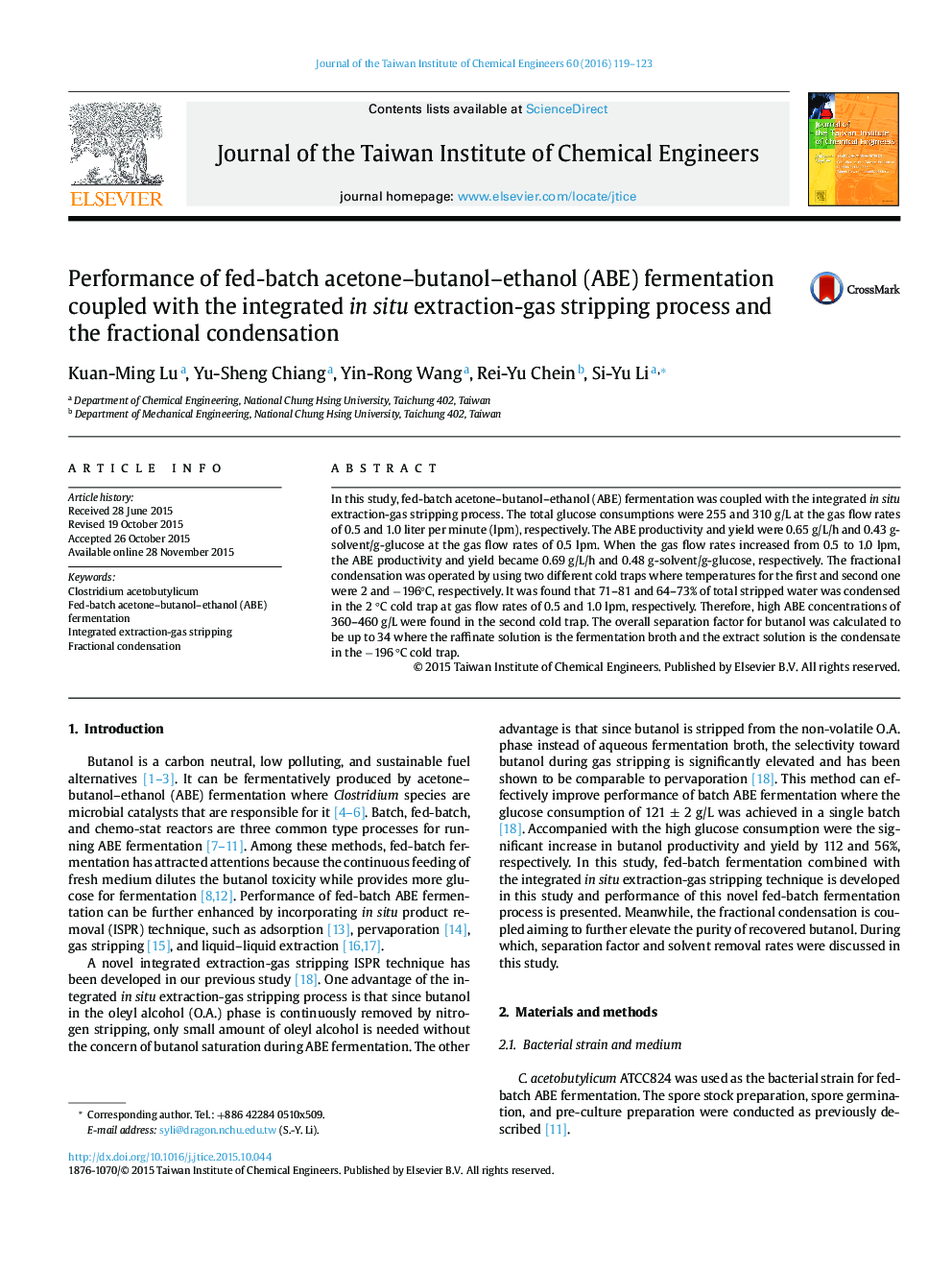| Article ID | Journal | Published Year | Pages | File Type |
|---|---|---|---|---|
| 690454 | Journal of the Taiwan Institute of Chemical Engineers | 2016 | 5 Pages |
•Fed-batch ABE fermentation is coupled with the recently developed ISPR. The integrated process provides a ABE productivity of 0.65 g/L/h.•The integrated process provides a ABE yield of 0.43 g-ABE/g-glucose. The fractional condensation is applied to recover solvents.•The ABE concentrations of 360–460 g/L in the condensate are achieved.
In this study, fed-batch acetone–butanol–ethanol (ABE) fermentation was coupled with the integrated in situ extraction-gas stripping process. The total glucose consumptions were 255 and 310 g/L at the gas flow rates of 0.5 and 1.0 liter per minute (lpm), respectively. The ABE productivity and yield were 0.65 g/L/h and 0.43 g-solvent/g-glucose at the gas flow rates of 0.5 lpm. When the gas flow rates increased from 0.5 to 1.0 lpm, the ABE productivity and yield became 0.69 g/L/h and 0.48 g-solvent/g-glucose, respectively. The fractional condensation was operated by using two different cold traps where temperatures for the first and second one were 2 and −196°C, respectively. It was found that 71–81 and 64–73% of total stripped water was condensed in the 2 °C cold trap at gas flow rates of 0.5 and 1.0 lpm, respectively. Therefore, high ABE concentrations of 360–460 g/L were found in the second cold trap. The overall separation factor for butanol was calculated to be up to 34 where the raffinate solution is the fermentation broth and the extract solution is the condensate in the −196 °C cold trap.
Graphical abstract Figure optionsDownload full-size imageDownload as PowerPoint slide
